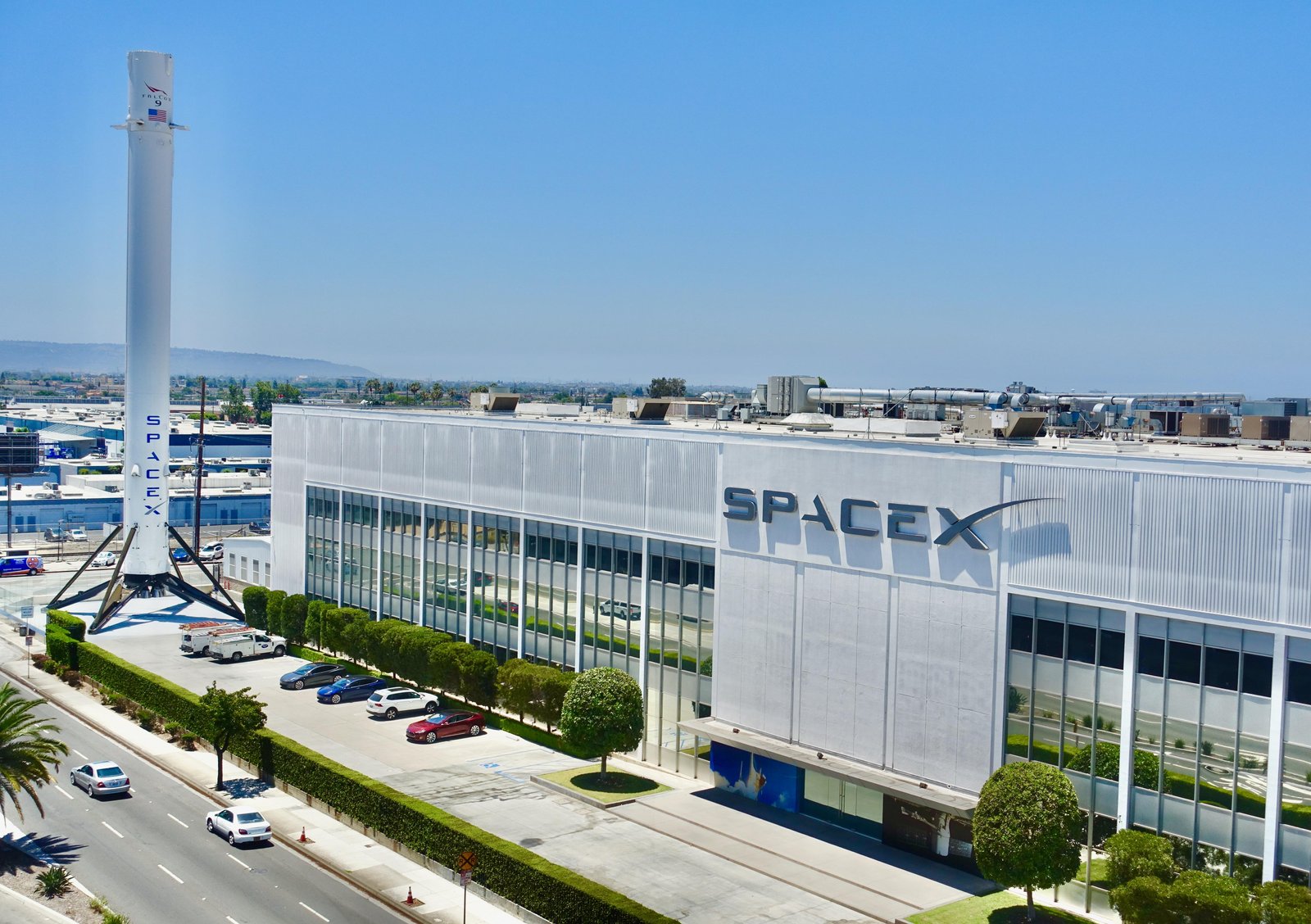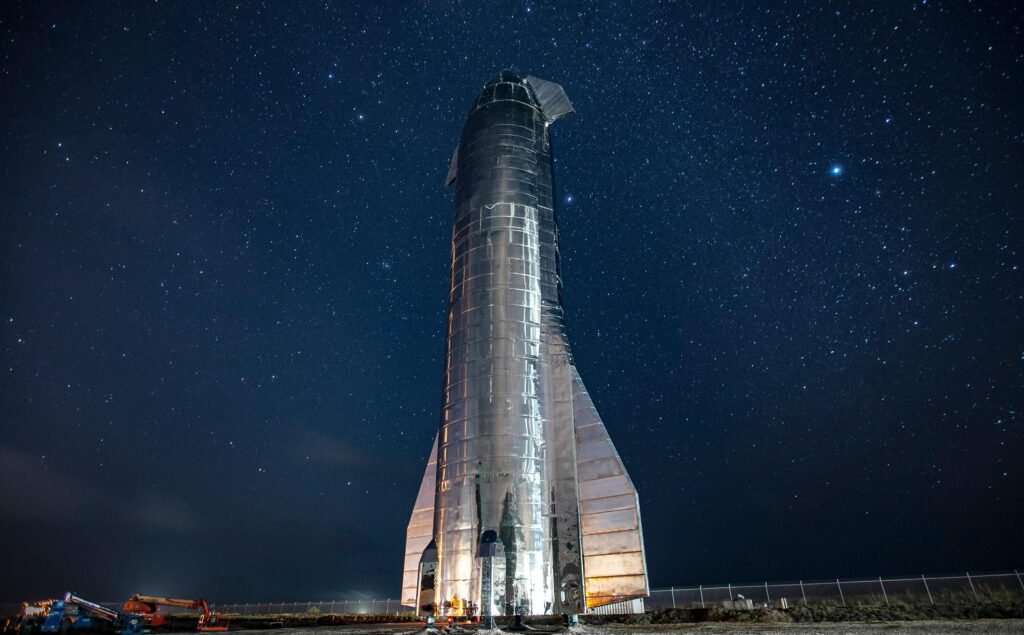In the ever-evolving realm of space exploration, where ambition meets the cosmos, even the most meticulously planned endeavors can be tempered by the whims of nature. Today, as the world eagerly anticipated a groundbreaking rocket launch from Cape Canaveral, SpaceX found itself at the mercy of unfavorable weather conditions. With the countdown paused and eyes turned to the skies, the company has announced a rescheduling of its launch attempt to Sunday morning. This decision underscores the unpredictable nature of aerospace missions, reminding us that while technology strives to reach new heights, the elements remain an unwavering force. As enthusiasts and industry watchers alike look forward to the rescheduled event, questions linger about what this delay means for future ambitions and the delicate interplay between human innovation and the vast universe above.
SpaceX Postpones Cape Canaveral Launch Amid Inclement Weather Challenges
SpaceX has made the difficult decision to stand down from today’s launch attempt at Cape Canaveral due to challenging weather conditions that could pose risks to the rocket and mission objectives. Meteorological forecasts indicated a significant chance of inclement weather in the launch area, prompting the team to prioritize safety and mission integrity over a tight schedule. This postponement highlights the critical nature of weather conditions in space exploration, where even minor disturbances can affect the outcome of complex operations.
As the team prepares to pivot to a new launch window, they are optimistic about rescheduling for Sunday morning, when forecasts suggest a more favorable atmospheric scenario. The operational team is readying all systems and conducting thorough checks to ensure everything remains in prime condition for the rescheduled launch. Here’s what’s at stake:
| Mission Element | Status |
|---|---|
| Launch Vehicle | Ready |
| Crew Readiness | On Standby |
| Payload | Secured |
In light of the postponement, the mission team will continue monitoring weather updates closely. The hope is that conditions will stabilize by Sunday, allowing the planned lift-off to proceed smoothly. Stay tuned for further updates as SpaceX navigates this dynamic situation in its pursuit of interstellar advancements.

Analyzing the Impact of Weather Conditions on Space Launch Performances
Weather conditions play a critical role in determining the success of space launches, as evident in the recent decision by SpaceX to postpone their anticipated rocket launch. This decision underscores the importance of favorable environmental factors, which include wind speeds, cloud cover, precipitation, and lightning potential. In the realm of rocketry, even slight deviations in weather can spell the difference between a successful launch and a regrettable delay. During the countdown, meteorologists monitor various parameters closely to assess the situation:
- Wind Speed: High winds can jeopardize the stability of the rocket during ascent.
- Cloud Cover: Thick clouds can hinder visibility and impede tracking systems.
- Precipitation: Rain can affect propulsion and instrumentation.
- Lightning Risk: The risk of lightning strikes is significant during takeoff.
The consequences of weather-related postponements extend beyond logistics; they can also influence the mission’s equipment readiness and team morale. Each rescheduling can lead to extensive preparations for ground crews, who must ensure that the equipment remains in optimal condition. In many cases, these delays can affect the delicate coordination among the various teams involved in the launch, prolonging the excitement for agencies and the public alike. Here’s a quick overview of what conditions led to the rescheduling:
| Weather Condition | Status |
|---|---|
| Wind Speed | Excessive |
| Cloud Cover | Relatively Thick |
| Rain | Possible |
| Lightning Risk | High |

Future Forecasts: Potential Launch Windows and Recommendations for SpaceX
As SpaceX looks to capitalize on its ambitious launch schedule, weather patterns and atmospheric conditions play a crucial role in determining the feasibility of upcoming missions. The team’s decision to postpone today’s launch due to unfavorable weather highlights the necessity for flexibility in planning. For the coming days, a thorough analysis will be vital in identifying the most opportune launch windows. Potential considerations for the Sunday morning attempt include:
- Wind Conditions: Monitoring upper-level winds which can significantly impact vehicle performance.
- Precipitation Forecast: Ensuring that rain chances diminish during the launch window.
- Cloud Cover: Maintaining visibility for tracking and safety purposes.
In addition to tracking weather patterns, SpaceX may want to implement strategic pre-launch checks to maximize success during the upcoming window. Planning for expected variables can increase resiliency and adaptability. Below is a simplified table showcasing upcoming launch opportunities and recommended actions:
| Launch Date | Weather Conditions | Recommendation |
|---|---|---|
| Sunday Morning | Clear with light winds | Proceed with launch |
| Next Week | Possible storms | Monitor closely; consider rescheduling |
By keeping a keen eye on these factors, SpaceX can ensure that they are not only prepared for the immediate launch but also positioned for success in future missions. Building a proactive approach will enable the team to adapt quickly to changes, increasing the likelihood of completing their ambitious launch objectives successfully.

Expert Insights on Preparing for Unpredictable Space Launch Scenarios
As the world of space exploration continues to evolve, the importance of being prepared for unpredictable scenarios becomes increasingly evident. Weather conditions can dramatically affect launch schedules, presenting a myriad of challenges that companies like SpaceX must navigate. To mitigate the risks associated with such uncertainties, there are several strategies that can be employed:
- Comprehensive Weather Monitoring: Continuous analysis of meteorological data allows teams to make informed decisions leading up to the launch.
- Flexible Scheduling: Establishing a launch window rather than a fixed date can accommodate changing weather patterns.
- Risk Assessment Protocols: Identifying potential risks and developing contingency plans can enhance response times when faced with sudden changes.
Additionally, fostering collaboration with meteorological experts can significantly enhance a team’s ability to respond to adverse conditions. Implementing regular briefings that include both engineers and meteorologists ensures seamless communication and quick decision-making. Below is a table summarizing key components of an effective launch preparation strategy:
| Strategy | Description |
|---|---|
| Data Integration | Combining various data sources for a holistic weather assessment. |
| Real-Time Updates | Utilizing technology for immediate updates on weather conditions. |
| Team Training | Regular drills to prepare for quick response to weather-related changes. |
Q&A
Q&A: SpaceX Stands Down From Today’s Rocket Launch in Cape Canaveral Due to Unfavorable Weather, Will Attempt Sunday Morning
Q1: What was the reason for SpaceX’s decision to stand down from the planned rocket launch?
A1: SpaceX decided to postpone today’s launch due to unfavorable weather conditions at Cape Canaveral. The safety of the crew and the rocket is always the top priority, and current atmospheric conditions did not meet the necessary criteria for a successful launch.
Q2: When is SpaceX planning to attempt the launch again?
A2: The next scheduled attempt for the rocket launch is set for Sunday morning, assuming the weather conditions improve and provide a clear and safe window for liftoff.
Q3: What are the potential weather conditions that could affect the launch?
A3: Various weather conditions can impact a launch, including high winds, thick cloud cover, thunderstorms, or even lightning in the vicinity of the launch site. Any of these factors can create unsafe conditions for a rocket launch.
Q4: How does SpaceX monitor weather conditions leading up to a launch?
A4: SpaceX employs a team of meteorologists who continually monitor atmospheric conditions in the lead-up to a launch. They analyze forecasts, satellite imagery, and other data to determine whether conditions are suitable.
Q5: What is the significance of this particular rocket launch?
A5: Each launch by SpaceX carries its own significance, whether it involves delivering payloads to the International Space Station, launching satellites, or testing new technology. The details of this specific mission would provide further context to its importance in the broader scope of SpaceX’s goals.
Q6: Is there a process in place for rescheduling a launch after a stand down?
A6: Yes, SpaceX has a well-defined process for rescheduling launches. Once a stand down is called, the team assesses the schedule, the readiness of the rocket, and the availability of critical support resources before determining the best time for a new launch attempt.
Q7: How does this postponement affect the overall schedule for SpaceX?
A7: While any postponement can ripple through their launch schedule, SpaceX has built a resilient operation designed to adapt to changes. They continuously optimize schedules, and the team is equipped to manage any shifts without significantly disrupting their broader mission objectives.
Q8: Where can the public watch the attempted launch on Sunday?
A8: The launch is expected to be streamed live on SpaceX’s official website and various social media platforms. Viewers can also find updates related to the launch on SpaceX’s Twitter account and other space-related news outlets.
Q9: How can people stay informed about future launches or weather-related updates?
A9: To stay informed, interested individuals can follow SpaceX’s official website, sign up for newsletters, or follow their social media accounts. Additionally, local news outlets often cover significant launches and provide real-time updates on weather conditions.
Q10: What is the community’s reaction to the postponement?
A10: Generally, the community of space enthusiasts understands the need for safe launch procedures, and many express support for SpaceX’s decision to prioritize safety over schedule. There is also a sense of anticipation for the upcoming launch, with many eagerly awaiting the next opportunity to witness space exploration advances.
In Retrospect
As the countdown clock ticked away in anticipation of today’s launch, the decision to stand down due to adverse weather conditions serves as a reminder of the unpredictability of space exploration. While fans and enthusiasts alike may be disappointed, it is a small pause in the grand adventure of reaching for the stars. SpaceX has illustrated time and again its resilience and commitment to safety, underscoring the idea that the cosmos is not just a destination but a journey that requires patience and adaptability. As we look ahead to Sunday morning, we remain hopeful that clear skies and favorable winds will pave the way for another chapter in the saga of innovation and discovery. Until then, we’ll keep our eyes on the skies, waiting for the moment when the roar of engines will once again echo across Cape Canaveral, bringing humanity one step closer to its celestial dreams.

